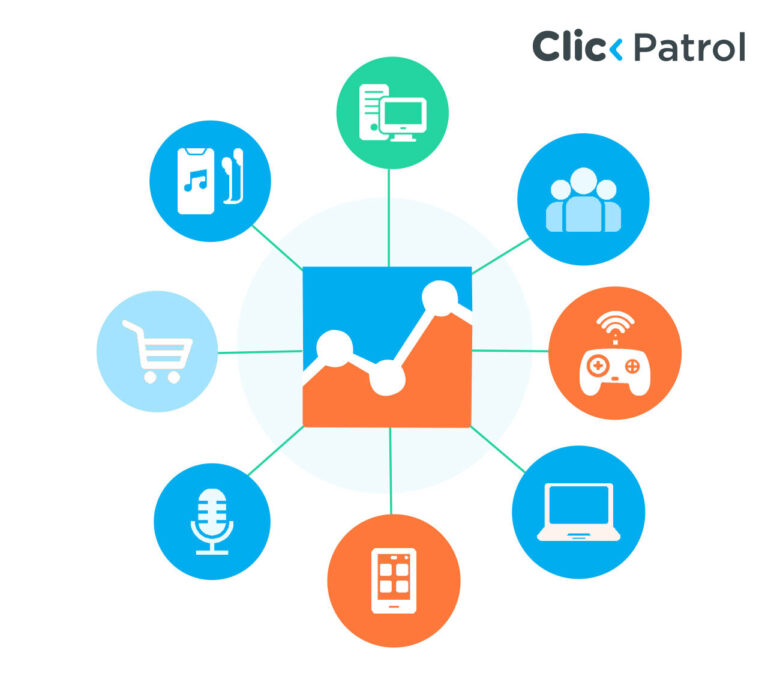
Understanding Click Fraud and WordPress
Abisola Tanzako | Apr 12, 2024

Table of Contents
- What is Click Fraud?
- The impact of click fraud on WordPress websites?
- Common causes of Click Fraud in WordPress
- Outdated software
- Insecure passwords
- Unreliable plugins and themes
- Insufficient database and file security
- Ignoring backups for websites
- How to protect your WordPress from Click fraud
- Utilize WordPress security
- Enable two-factor authentication and use strong passwords.
- Use ClickPatrol
- Monitor your website
- Use rate limiting for your WordPress website
- Install trusted plugins and themes
- Frequently check for invalid clicks
- Put web application firewall (WAF) into action
- Regularly backup your website
- Educate both your users and yourself
- Hire a security service professional
- Managing Click Fraud and Word Press
- FAQs
Is there a relationship between Click Fraud and WordPress?
In a world of digital engagement, Click fraud has become a persistent foe, posing a danger to online interaction. Website owners, advertisers, and the WordPress community must be equipped with the knowledge to protect their sites from click fraud and guarantee a real user engagement experience.
In this article, we will discuss how to prevent and protect your WordPress account from click fraud so you can maintain its integrity.
What is Click Fraud?
Click fraud is clicking on internet content, including sponsored or organic advertisements, to cause harm or retaliation. It may be done to exhaust the advertisers’ marketing budgets, impair the advertisement’s effectiveness or reach, or steal the cost of the click for yourself (a tactic known as ad fraud).
When it comes to click fraud on organic content, such as phony clicks on your social media posts or fake website traffic, fraudsters may use your statistics to support their efforts, overwhelm your Website, or obtain a competitive edge. Click Fraud are:
- Impressions or clicks made by website owners on their advertisements
- Persistent clicks or impressions on ads from one or more users
- Website owners that trick visitors into inadvertently clicking on their advertisements
- Automated tools like bots and robots manipulate clicks and impressions.
The impact of click fraud on WordPress websites?
The impact of Click Fraud can have severe consequences. Some of these include:
- Loss of revenue: For WordPress website owners who depend on ad revenue or employ pay-per-click models, the financial implication of click fraud can be severe. Advertisers pay for clicks that don’t yield genuine leads or conversions, resulting in depleted budgets and a decline in return on investment (ROI).
- Incorrect Analytics and Reporting: One integral part of WordPress is using CMS (Customer Management System) analytics tools to optimize content strategies and understand user behavior. However, when click fraud is present on your WordPress, it distorts these analytics and reporting metrics. Site owners may base critical decisions on inaccurate data, compromising the overall effectiveness of their marketing and engagement strategies.
- Threat to Ad Campaigns: WordPress websites hosting ad campaigns are particularly susceptible to the adverse effects of click fraud. The performance metrics of these campaigns can be artificially inflated or deflated, making it challenging for advertisers to gauge the success of their efforts accurately. This hinders their ability to optimize strategies for maximum impact.
Common causes of Click Fraud in WordPress
You can prevent attacks by taking proactive steps from click fraud by being aware of their typical causes. WordPress websites are susceptible to click fraud assaults due to the following reasons:
Outdated software
Using out-of-date WordPress themes, plugins, and core can leave your Website vulnerable to security issues. Developers frequently release updates to fix known security flaws; if you don’t update on time, you are more likely to experience click fraud.
Insecure passwords
Hackers can quickly obtain unauthorized access to Weak passwords, which pose a risk to your WordPress website. All user accounts, including administrator accounts, must have solid and one-of-a-kind passwords, and users should be encouraged to use similar passwords.
Unreliable plugins and themes
Installing plugins and themes from unreliable sources can infect your Website with harmful code. When selecting themes and plugins, stay with reliable marketplaces and developers, and update them frequently to stay updated with security patches.
Insufficient database and file security
When insecure database configurations are combined with incorrect file and directory permissions, it can be simpler for attackers to insert malicious code into your Website or obtain unauthorized access.
Ignoring backups for websites
Maintaining a regular website backup is essential for reducing the damage caused by click fraud. In the event of an infection, you can minimize downtime and data loss by restoring your Website to its former, uncontaminated state.
How to protect your WordPress from Click fraud
Utilize WordPress security
WordPress has recent software updates and built-in features that can protect your site, so ensuring your WordPress is up to date with the most recent version should be your top priority. It is essential to keep your Website updated to reduce the likelihood of an attack, as outdated software may have weaknesses that bots can exploit.
You should also utilize WordPress’s built-in security measures. You may safeguard your Website using a variety of plugins, such as iThemes Security, Wordfence Security, and Jetpack Security. These plugins have numerous security capabilities, including virus detection, firewall protection, and two-factor authentication. When choosing a plugin, make sure to thoroughly review the functions it offers because different plugins provide different kinds of protection.
Enable two-factor authentication and use strong passwords.
Creating secure, one-of-a-kind passwords for your WordPress accounts is a crucial step. Doing this can lessen the likelihood that bots will guess your passwords and access your Website. To add security, consider turning on two-factor authentication on your WordPress accounts.
Use ClickPatrol
Use click fraud protection software such as ClickPatrol to screen clicks and block suspicious clicks from your website thoroughly. With its superior algorithm, you protect your ads and your entire website.
Monitor your website
It’s crucial to keep an eye on your Website for odd activity, such as sudden increases in traffic or the creation of new user accounts. Keeping an eye on your Website will enable you to detect and address any possible bot attacks promptly. Several plugins, such as Jetpack Monitor and Google Analytics, can assist you with site monitoring.
Use rate limiting for your WordPress website
Rate restriction is another tactic to stop invalid clicks from your Website. This entails setting a temporal limit on how many requests a user may make to your Website. This can lessen the chance that bots will overrun your Website and cause it to load slowly. You can apply rate limitations using several plugins, such as WP Security Audit Log and Limit Login Attempts.
Install trusted plugins and themes
Select themes and plugins from reliable vendors, well-known developers, or the official WordPress repository. Avoid Installing and downloading themes or plugins from unidentified or dubious sources since they could contain hidden click fraud.
Frequently check for invalid clicks
Use internet scanning tools or security plugins to periodically check your WordPress website for invalid clicks. These tools can find code injections, dubious files, and other signs of a hacked website. If malicious clicks are found, remove them and improve the security of your Website.
Put web application firewall (WAF) into action
A web application firewall protects your website from possible attacks. It adds another layer of defense against malicious requests and filters incoming traffic.
Regularly backup your website
Make frequent backups of your Website’s files and database. Keep the backups safe on a cloud storage platform or remote server. A backup guarantees that you can promptly restore your Website to a clean state in the case of a virus attack or any other unanticipated condition.
Educate both your users and yourself
Keep up with the most recent security best practices and advise your users and yourself about the dangers of click fraud. Teach your team to recognize phishing efforts, dubious links, and other typical attack methods. Promote a vigilant and security-aware culture.
Hire a security service professional
Think about hiring specialists in online security with a focus on WordPress security. They can help conduct a detailed audit, implement advanced security measures, and provide constant monitoring support to protect your Website.
Managing Click Fraud and Word Press
It takes effort, a proactive attitude, and strategies to keep your WordPress website safe from click fraud. By understanding the typical reasons for click fraud attacks and taking preventative action, you can lower the likelihood of fraudulent activities on your Website.
To protect your WordPress website, keep it updated, create strong passwords, install reputable themes and plugins, perform routine scans, and use security tools and services. Remember that spending money on security is an investment in your Website’s long-term performance and reputation. That way, your Website is safe while you concentrate on crafting compelling content to captivate your audience.
FAQs
What is a WordPress plugin?
WordPress plugins enhance your website with new features or capabilities, allowing you to create various sites like directories or e-commerce. They can make minor or significant modifications, such as adding multilingual support or simplifying email opt-ins. Plugins work by hooking into WordPress’s source code through access points provided by the Plugin API.
How can a plugin be used in WordPress?
To use a WordPress plugin, you can install it directly from the official directory with one click in your dashboard. For premium or custom plugins, download and upload via FTP, then activate f





